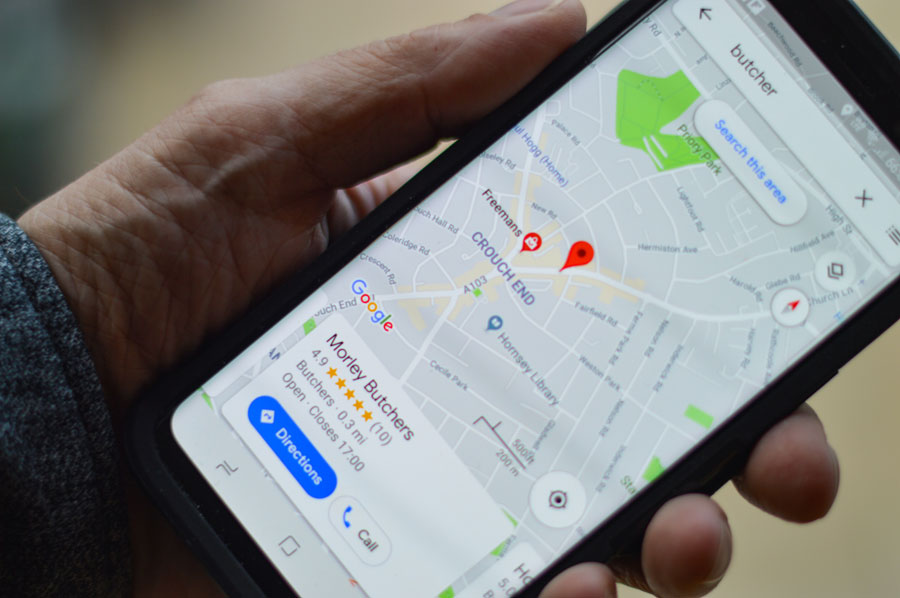This is a step-by-step guide showing you how to complete the fundamentals of local SEO for beginners. Implementing these steps will put you in a better position to rank your business.
Google My Business
Google My Business is a free listing that allows you to control how your business appears in Google Maps and organic search results. It is the most important element for local SEO, and it’s important to get started with it as soon as possible.
Head on over to www.google.com/business/. You’ll be prompted to enter your business name, address, and phone number. Once you’ve entered that information, you can add additional details about your business, such as hours of operation, services offered, etc. Well, view website for more information regarding SEO advantages with review automation.
Once you’ve created your profile, be sure to add some photos.
Adding photos to your Google My Business listing is a great way to show potential customers what your business is all about. People are visual (for the most part), and seeing photos of your products or services can be a powerful way to persuade them to give your business a try.
Adding Photos
To add photos, simply login to your Google My Business account and click on the “Photos” tab. From there, you can upload photos of your business, products, services, etc. Be sure to add captions and descriptions to each photo so that potential customers know what they’re looking at.
Adding photos is a simple way to make your listing more attractive and increase the chances of getting clicks and traffic to your website.
Reviews
Encouraging customer reviews is a great way to build trust and credibility with potential customers. When people see that others have had positive experiences with your business, they’re more likely to give you a try.
How to get reviews?
There are a few ways you can encourage customers to leave reviews for your business. The first is to simply ask them! If you have happy customers, let them know that you would appreciate a review and provide a link to your listing. You can also include a call-to-action on your website or in your email signature encouraging people to leave a review.
Another way to encourage reviews is to offer incentives. You can offer discounts or coupons for people who leave a review or enter them into a drawing for a prize if they write one. Just be sure not to violate any of Google’s guidelines around reviews.
Encouraging customer reviews is a great way to build trust and credibility with potential customers. By following these tips, you can start getting more reviews for your business.
Citations
Citations are one of the most important factors for local SEO. A citation is simply an online mention of your business name, address, and phone number. The more citations you have, the higher you will rank in Google Maps and for local queries. There are many ways to get citations, but the best way is to be listed on high quality directories. Google My Business is the most important directory you can be listed on, but many others will also help.
Here are a few other directories to get you started:
- Bing Places for Business
- Yelp
- Angie’s List
- Yellow Pages
- BBB (Better Business Bureau)
- Citysearch
- Manta
Make sure your NAP is consistent across all directories. In order to make sure it is, you can utilise a service like Moz local. It will scan through your citations to look for opportunities and check for inconsistent listings.
If your NAP is different on different websites, it will confuse Google and hurt your chances of ranking.
It’s also a good idea to set up Google Alerts for your business name and address. That way, you’ll be notified anytime your NAP information is changed on a website. By keeping your NAP consistent, you can help improve your local SEO and increase your chances of ranking in Google Maps.
Website
One of the most important parts of local SEO is optimising your website for local keywords. This means including your city or region in your title tags, meta descriptions, “H” tags, and alt text. It also means creating content about topics that are relevant to your location.
For example, if you’re a plumber in Los Angeles, you might write a blog post about “The Best Plumbers in Los Angeles” or “How to Find a Good Plumber in Los Angeles.” By including your city in your titles and content, you’re telling Google that your website is relevant to people who are searching for businesses in that area.
URL Structure
If the business has multiple locations each location should have its own dedicated page with the following URL structure.
Example:
- www.example.com/location/city-name-1
- www.example.com/location/city-name-2
- etc.
Local SEO Checklist
- Claim your Google My Business listing
Add photos and encourage customer reviews
- Collect and respond to reviews
- Create local content
- Optimise on-site elements
Optimise your website for local keywords
- Get listed in online directories
- Use location extensions in your ads
- Get active locally
- Monitor your progress and adjust accordingly
So there you have it. By following these steps and completing the items on this checklist, you’ll be well on your way to ranking higher in Google and getting more traffic to your website.
Conclusion
My hope is that this post will be used as a useful beginner’s guide to local SEO in 2022. SEO is always changing but this post will hopefully keep you ahead of the curve when it comes to local search. Try not to get frustrated and hang in there. Happy Optimisation!
Author Bio
Edan Mizrahi is the founder of the Internet Marketing company Brand Sentrik – SEO Agency Las Vegas.





